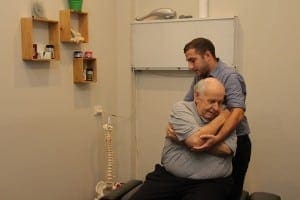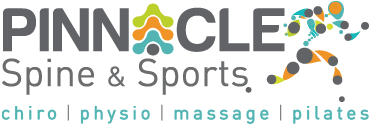By Grant Colombo | Chiropractor
Ageing is a process we all experience during our lives. There are certain changes that occur to the human body as we age which can cause discomfort, frustration, and reduced functionality. These changes occur at different rates in each individual and some may be more predisposed to experiencing certain changes in comparison to others. Genetics, lifestyle factors, previous history of trauma, drug use, medical conditions and diet are all well known contributors to these changes.
There are many changes that occur with ageing, and the effects of chiropractic care are just as widespread. However, for the sake of brevity I will focus on two points that chiropractic can help with as we get older:
#1: Changes to balance and coordination.

Many issues with balance and coordination can occur whilst we age. They are usually the result of degenerative changes or from injury. Decreased blood flow to muscle and certain structures can result in the reduction of strength and therefore alter strength and responsiveness to potentially dangerous scenarios. Changes in receptor sensitivity and reductions in muscle mass and elasticity can also put the elderly at more risk of injury.
Structures known as mechanoreceptors are responsible for providing our nervous system with the necessary information to make movement possible and to respond and coordinate locomotion. These receptors are in all joints but are found in extremely high concentrations in the spine. They provide our neural system information as to where our body parts are in space and help provide smooth, coordinated movement. With aging our body’s ability to detect and respond to these changes are reduced.
Research has shown that chiropractic care has been able to help restore and/or prevent these losses by stimulating these important joint receptors. The chiropractic adjustment delivered to specific pre-determined joints helps restore and provide movement and therefore stimulation of these receptors. This helps maintain the important neural pathways responsible for movement and coordination. Soft tissue techniques such as trigger point releases and massage can also help by increasing blood flow and muscle elasticity ensuring muscles ligament and tendons are sufficiently strong enough to cope with the sudden demand that may be placed on them during a loss in balance or coordination.
To read more about how chiropractic can affect balance & coordination, CLICK HERE.
#2: Increased range of motion and reduction of pain and effects of osteoarthritis

As we age it is natural that the integrity and strength of our body’s structures slowly decline. It is mainly for this reason we see levels of reduced physical activity associated with ageing. It is important to try our best to maintain musculo-skeletal health. Simple tasks such as doing the laundry and dressing oneself can become difficult if we do not maintain a healthy balanced lifestyle.
Chiropractic care has repeatedly shown to help increase and maintain joint mobility and range of motion. Joints that are not being used are much more vulnerable to degenerative change. Joints, muscles and tendons that are regularly active receive more blood flow and can excrete metabolites at a much greater efficiency. This explains why active joints and surrounding structures are able to heal and respond quicker than those that are inactive. Joint manipulation, whether it be mobilisation or adjustments aim to restore and/or maintain movement within the targeted joints. The repeated movement of joints prevents adhesive and fibrotic build up within the joints that occur commonly with ageing. It also has been shown to improve blood flow to these structures. Certain faulty movement patterns due to joint hypomobility (decreased movement) can be addressed by chiropractic interventions and the overall musculoskeletal health and wellbeing can be improved and maintained.
To read more about joint pain & arthritis CLICK HERE.
To find out more about exercise and ageing CLICK HERE.

